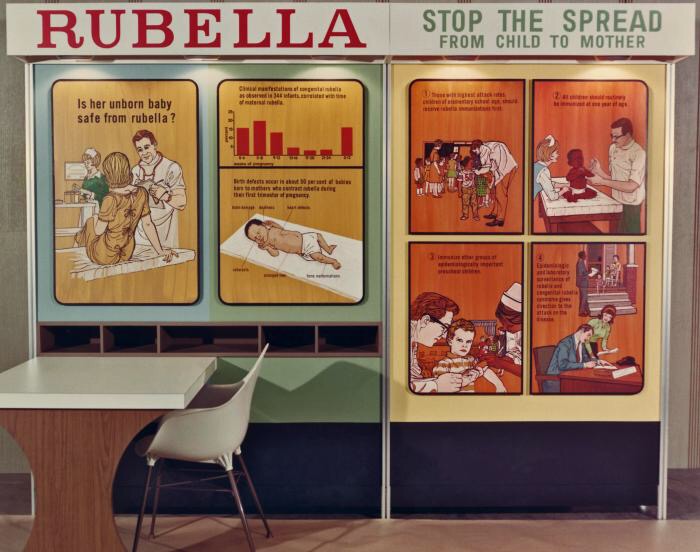Quickies
Quickies: The God Gap, Zika Virus and the Abortion Debate, and the Price of Being a Woman

- One Woman’s Reaction To Every ‘White Man’s Sentence’ – ” ‘In case you haven’t realized, it’s somehow become necessary for old white men to tell me how to speak.’ That’s how Melissa Lozada-Oliva begins her powerful spoken word poem ‘Like Totally Whatever’ that she performed at the 2015 National Poetry Slam earlier this month. Lozada-Oliva details the subtle sexism engrained in the critiques of how women speak.” I LOVE this! From Courtney.
- The Bacterium Disappearing From Our Stomachs – “A primer on the gut bacterium Helicobacter pylori, and the controversy surrounding it.”
- The Rise Of The ‘God Gap’ – “Marco Rubio’s plan for the final days before the Iowa caucuses, according to The Washington Post, is to talk about God … a lot. And with all the focus on the evangelical Christian vote in Iowa — they make up nearly 60 percent of Republican caucus-goers and are credited with powering Ted Cruz into the top tier of the race — Rubio’s plan isn’t surprising. But the media’s focus on evangelical Christians misses the larger story: The best predictor of vote choice, according to work by political scientists Robert Putnam of Harvard and David Campbell of Notre Dame, is religiosity, not religious affiliation; Putnam and Campbell call it the ‘God gap.’ “
- Zika Virus Isn’t The First Disease To Spark A Debate About Abortion – “In the 1960s, abortion was illegal in the United States. But an outbreak of rubella (commonly known as German measles or three-day measles) brought the issue of abortion up for public debate. As a result of the national conversations, more Americans came to empathize with those mothers who had an illicit abortion. That was nearly a decade before Roe v. Wade ushered in the era of legal abortions.”
- Women are overcharged every day. Imagine if that happened to men – “In December, an investigation by the New York City Department of Consumer Affairs found that in a study of nearly 800 products – from toys to personal items like shampoo – many were priced differently for men and women. Men’s razors went for $14.99, for example, while the same razors marketed toward women were being sold for $18.49. A pink Radio Flyer children’s scooter in pink was double the price of a red ‘boys’ ‘ version. In total, the investigation found that of the products they looked at, items were priced on average 7% more for women than those for men.”





I hope there is more research into H. pylori before it is seen as beneficial, this article anyway seemed like an awful lot of “it’s ancient so it’s good” which is simply a fallacy.
Could it be beneficial? Of course, but asthma’s rise has been speculated to be because the decline of other illnesses as well (most notably pinworm infestation) that are for the most part dismissed by the mainstream of science, as well as environmental factors (like living in more urban settings) that are seen as more likely.
All may be worth looking at, I just think that this article shows that Martin Blaser has a pet hypothesis (which makes perfect sense given his line of study) but for every time one of these has panned out (the noted Nobel for Warren and Marshall) yet another has sunk the reputation of those who refuse the let go (think Linus Pauling and Vitamin C).
I think you miss the point somewhat. The reasoning is not so much that “if it’s ancient it’s good”, but rather that if a detrimental organism has been around in symbiosis with man in our biome, like forever, that needs to be accounted for.
In other words, as for sickle cell anaemia, there has to be a selective advantage to outweigh the disadvantage – otherwise the trait would have been eliminated from the population.
It is essentially a mathematical argument. Of course I agree that more research is needed.
The difference of course being that sickle cell is genetic and H. pylori is environmental making the selection argument much more complicated, besides which there does not need to be an advantage to a trait (or in this case a symbiotic relationship) for it to be selected for, just that the disadvantages don’t out-weight the “cost” of the trait.
If you take the modern view that our endogenous bacteria are an essential part of us, almost like a lichen consists of alga and fungus together, then we have to consider the HPy genome as well as our own. This is indeed complicated from a selection point of view. The bugs can be viewed both as environment and as genetically part of us, at least as an extension.
I would suggest that the sickle cell case is also complicated. It’s not just one gene (it never is) but our genome, the bug genome and the mosquito genome. Environment (climate!) plays a key role in understanding the full picture. It’s not entirely genetic or environmental in either case.
I’m not sure that I understand the last part of your sentence – how can disadvantages outweigh a cost? It’s the sum of a series of pros and cons that add up to a net benefit (survival) or elimination over time.
I don’t know if we have enough information yet to say definitely whether HPy is symbiotic or not but it seems an interesting hypothesis to test.
What I meant, and keep in mind I am not an expert by any means, was that even if a gene were to have negative effects it might not be enough to force change if the change would cost too much evolutionarily. (sic)
For example, the human eye is a mess and we could probably have a better working one by now if it were as important enough to us as it is to say an eagle, but since is does a “good enough” job the energy it would take to develop a better one isn’t worth it. Things like our brain and our hands seem to have deemed “worthy” by evolution for the upgrade.
I realize my language is wonky on this and there is too much simplification but I hope you get my meaning.
I don’t think we should dismiss it, just that we should keep it in mind like we do all technologies (from stone mallets all the way to GPS) that through the years have almost certainly changed our evolutionary path.
(maximum reply nesting depth reached so putting this here)
OK I see what you mean now. Don’t worry I am no expert either. I’m a biochemist, not a geneticist. But some of my work is related to genetic screening so I have read a few papers on the subject.
There are people who can calculate things like selection pressures quantitatively. (Our mate RD would be one!) It seems that even a small selective pro or con parleys into a large selection pressure, so when we encounter a trait like HPy that can be fatal, and it appears to be present in the population at high frequency and has been so for a long time, that begs for some kind of explanation in terms of selective advantage. Of course the speculation needs to be confirmed by actual experimental evidence.
The Mark 2 eyeball OTOH has never arisen so cannot be selected for or against.